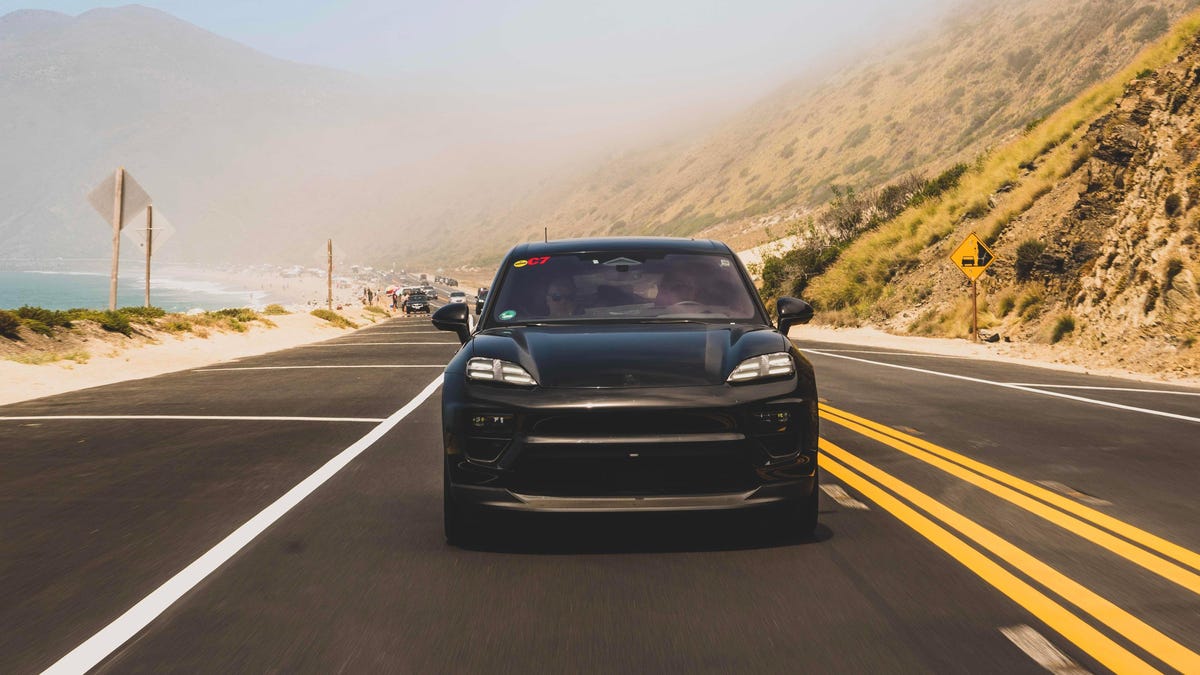After a bunch of delays, we’re finally going to see the Porsche Macan EV unveiled in a few months. In the meantime Porsche continues to tease the electric crossover, releasing new information about the second-gen Macan’s performance stats and testing regimen alongside yet more images of prototypes wearing little camo. Our friends at Edmunds recently got behind the wheel of a pair of Macan EV prototypes to do an unofficial 70-mph range test, where even the top trim went more than 300 miles on a charge.
The Macan EV rides on the new PPE platform that Porsche co-developed with Audi (the first Audi to use it will be the Q6 E-Tron), and every trim will have a 100-kWh battery pack with an 800-volt architecture. The battery is lighter and more energy dense than that of the Taycan, and it will be able to charge at up to 270 kW. Porsche says the Macan’s coefficient of drag is just 0.25, making it one of the most aerodynamic SUVs you can buy thanks to things like an active rear spoiler and air flaps, and every version of the Macan will have a range of at least 311 miles on the European WLTP cycle.
Typically the EPA ratings for new EVs are more conservative than the WLTP figures, but Edmunds’ range test shows we shouldn’t worry. This Macan test is not quite as scientific as the range tests that Edmunds does with production cars, but it was still done as properly as possible:
The plan for the day was to leave the hotel, hop straight on the freeway, and drive east on the highway at exactly 70 mph for as long as possible while keeping a close eye on the range calculator and the battery’s state of charge. Then I’d turn around and head back to base, with the goal of making it back with close to 0 miles remaining but not so close that I’d risk running the battery dry.
That’s very different than the Edmunds EV Range Test, where we use a precise mix of city and highway driving to provide a more realistic real-world figure. We also use a highly accurate third-party GPS to calculate our distance and average speed down to the tenth of a mile per hour, and aim for an average speed of 40 mph. We also have specific instructions for the climate control, drive modes and regenerative braking settings to control as many variables as possible.
The Macan was set in its most efficient drive mode (Normal) and its lowest suspension setting to make it more aerodynamic. I tried to use the climate control’s Eco mode but was unable to because, with three adults in the vehicle, it got unbearably hot rather quickly.
Edmunds started off with the fastest version of the Macan EV, likely to be named Macan Turbo, which will have more than 600 horsepower and the lowest range. The trip was originally going to be 280 miles, but according to Edmunds, Porsche kept extending how long the drive route was because of how well the Macan was doing, and they only hit a small section of bumper-to-bumper traffic at the end of the trip.
The Macan Turbo ended up traveling 298 miles in total with seven miles of range left at the end of the journey, which works out to 305 miles of range. That’s especially impressive given the average speed of 60 mph. Edmunds then did the same range trip in a base version of the Macan — also a dual-motor all-wheel-drive car, but with less power — which covered 325 miles at similar speeds. Even the most efficient versions of the Porsche Taycan have EPA ranges of under 250 miles, and while those have two-speed transmissions for better efficiency the new Macan has a single-speed transmission.
The existing gas-powered Macan is still Porsche’s best-selling model in the U.S. despite being a decade old, and it will continue to be sold for at least a year alongside the new electric model in America (it’s dying sooner in Europe). The Taycan has been a strong seller too, but its high price, lower range and sedan body keep it out of contention for many buyers. Edmunds’ range test bodes well for the Macan EV’s prospects, both as an appealing offering for first-time Porsche buyers and a replacement for existing Macan owners that want to go electric.

